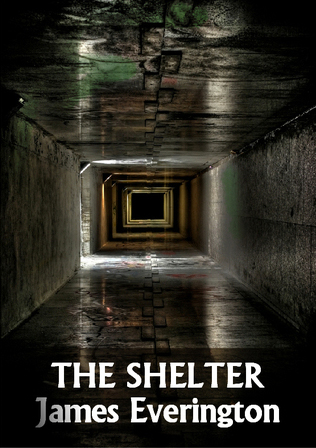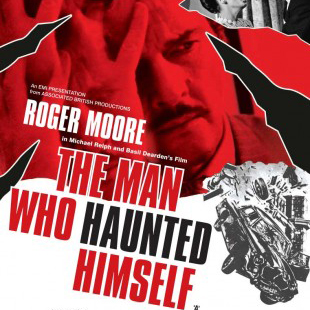 The Shelter and The Other Room are two self-published books by UK writer of ‘weird horror fiction’, James Everington. (See my reviews of his collection, Falling Over, published by Infinity Plus, and my interview with the author). Prior to these two titles Everington published in the Penny Dreadnought as one of The Abominable Gentlemen, and released the ebook novella Feed The Enemy.
The Shelter and The Other Room are two self-published books by UK writer of ‘weird horror fiction’, James Everington. (See my reviews of his collection, Falling Over, published by Infinity Plus, and my interview with the author). Prior to these two titles Everington published in the Penny Dreadnought as one of The Abominable Gentlemen, and released the ebook novella Feed The Enemy.
The Shelter came out in 2011 and is a well produced chapbook novella of around 56 unnumbered pages. It is, as the afterward explains, a heavily revised version of a story written 17 years earlier, not long after the real events upon which the fiction is based.
Four teenage boys growing up in a small English village have nothing to do one hot summer’s day. Alan Dean tells the tale in retrospect of how he, his friend Duncan and two slightly older boys, Tom and Mark, ‘who were both stupid and mean; bullies, to put it differently’, went looking for an old, possibly WW2 era, abandoned shelter. And what happened when they found it.
The story unfolds against the background of the recent disappearance of ‘a schoolboy of twelve, who had gone out to play and never returned.’ The Shelter is, as might be apparent from this synopsis, strongly influenced by Stephen King’s The Body (the story being better known from the film version, Stand By Me), in which four boys head out one hot summer’s day to see if they can find a body, victim of a railway accident. There is also an influence of King’s IT and Dan Simmon’s Summer of Night. The day ends with a traumatic, never quite understood event which scars Alan for life.
The tale is more straight-forward than Everington’s later stories, presumably for being based on a work begun as a teenager. The afterward adds a touch of the ambiguity found in the sort of material the author is writing now. It is a good, well characterised piece of work, very British despite the influences of King and Simmons, which effectively captures that feeling of boys in summer with nothing to do but look for trouble. There is a slow burning – perhaps a little too slow at around 15,000 words – sense of dread, building to a paniced horror as things go irrevocably out of control.
The supernatural element is low key and there is nothing in terms of story than genre aficionados won’t have read before, but it is all well done and the ending carries an understated chill.
As the back cover says, ‘The Other Room is a collection of weird horror fiction, containing twelve stories of the uncanny and the surreal.’ That’s as good a description as any, and the cover also tells us that ‘The Other Room was featured in the 2011 Red Adept Indie Awards short story category.’ It certainly deserved to, because self-published or not, and the odd typo aside (which these days even regularly crop up in professionally published books), The Other Room contains some fine material in its 179 pages.
 The title story is outstanding. A businessman finds his hotel key also opens the room next to his, which is a mirror image, and seems to exist in a parallel reality. Our anti-hero has a more confident, more destructive doppelganger, and if the story is influenced by the British film The Man Who Haunted Himself, then it stands alone as an effective and unsettling nightmare. At 25 pages The Other Room is one of several quite lengthy stories in the book, happily so for Everington works his atmospheric surrealism best in the longer pieces.
The title story is outstanding. A businessman finds his hotel key also opens the room next to his, which is a mirror image, and seems to exist in a parallel reality. Our anti-hero has a more confident, more destructive doppelganger, and if the story is influenced by the British film The Man Who Haunted Himself, then it stands alone as an effective and unsettling nightmare. At 25 pages The Other Room is one of several quite lengthy stories in the book, happily so for Everington works his atmospheric surrealism best in the longer pieces.
The book ends with the excellent ‘When the Walls Bend’, which comes in at 36 pages and is one of several stories about the potential for student life to lead to alienation. Our student has rented a ground floor flat in a run down, possibly haunted house. His landlord requires permission to enter the flat the first time he visits, which may make him a vampire of sorts. He is certainly involved in a very exploitative business, preying on young women in the international sex trade. When The Walls Bend features the most harrowing bathroom scenes I’ve read since my last visit to room 217.
‘The Watchers’ is another long short story with a student protagonist which is concerned with the male exploitation of women. Regina is every (straight) man’s perfect woman. She has a glamour which makes everyone, male and female alike, see her according to their own ideal. She is, of course, sick of the constant attention. She wants to be ordinary. When she meets Andy she has the chance to become normal, specifically beautiful according to his desire, to become locked in form and identity, to become real. But the same blindness which prevents everyone from seeing Regina for who she is, or could become, blinds them to the titular danger. ‘The Watchers’ is a fine story, one that lingers powerfully in the memory.
Of the shorter pieces, ‘Schrodinger’s Box’ offers another other room, this time a bathroom. In another shared house the famed Schrodinger’s Cat thought experiment is twisted into horrifying real-world relevance. A short, sharp, ingenious never-shredder.
In ‘A Writer’s Words’ a student on a train finds himself losing command of language and with it his ability to function in the world. It is very strong, terrifying piece of conceptual horror. ‘Red Route’ pulls an ingenious twist on a classic ghost story trope. You probably won’t see this one coming until it stuns you in the headlights. In these stories perception is all.
There are other tales, including three very short pieces of flash fiction, but I should leave you something to come to unawares. Everington includes useful afternotes for all the stories, and the book is more than worth adding to your collection for the pieces I’ve mentioned alone. If you enjoy it also try the author’s other collection, Falling Over.
*
To find out what makes James Everington tick read my interview with him. My review of Falling Over.
More info at jameseverington.blogspot.com










